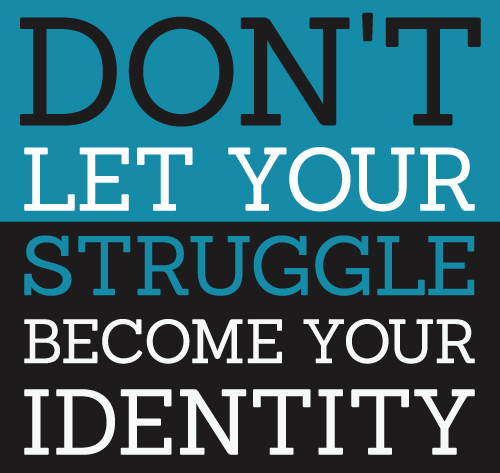Perspective on Social Identity and Behavior Change
Perspective on Social Identity and Behavior Change

Image Source
The idea of social norms and its part in explaining behavior is perceived over the social and behavioral sciences. What is being contended here is that through using the social identity point of view it is conceivable to gain theoretical clearness, better integrate existing hypothesis and research crosswise over disciplines and push ahead in a more brought together route by using insights from this viewpoint to think about behavior change.
Social identity point of view makes three novel commitments to understanding behavior change.
First, as highlighted above, it is the main examination that definitely explains which specific others will shape what our norms are and the degree to which they are reflected in behavior.
Second, through the investigation of setting subordinate social identity striking nature and social influence inherent in self-order hypothesis, a link it made between forming, strengthening and changing meaningful gatherings and behavior change. Identity-based self-change is critical in explaining behavior change.
Third, it can possibly integrate many existing strands of work within a more tightfisted record and offers new headings for research and practice.
At the point when individuals' social identity is notable, they see themselves as well as other people as an ingroup, as intellectually assembled as us who are more indistinguishable than contrasting others or them. This comparability makes a desire that we should concur and react similarly and spurs individuals to bring about such understanding.
Such inspiration for assention empowers common influence to happen opening up the likelihood that one's hypotheses, desires and convictions around oneself and the world can change. Knowing that those in the same psychological ingroup do X as opposed to Y, or accomplish a greater amount of X, is motivating and can influence one's own particular behavior.
This means social identity offers a way towards better understanding the procedure of behavior change. In the event that society's enrollments and related social characters change, so also can behavior. It is likewise conceivable that the meaning of existing gatherings, what we esteem and have confidence in, is redefined, requiring a change in expected and acknowledged examples of behavior. Put essentially, as definitions of our identity and our identity not move, so to does what we do.
Further, it is those gathering individuals that best speak to the gathering and its interests that have the most effect in influencing the normative direction of the gathering. There is a part for authority in helping to clear up being a gathering part, in building agreement around definitions of our identity, and embedding these in structures, customs and practices.

Image Source
Albeit more research is required that deliberately examines social identity forms with regards to behavior change interventions, there are various findings demonstrating the helpfulness of the social identity point of view in explaining the connection between identity, norms and behavior, and in a few instances behavior change. For instance, Jones, Haslam, York, and Ryan found that higher identification with ingroups in which bullying was not the norm was related with an altogether less ideal perspective of the domineering jerk and a conviction that the individuals who tormented ought to be rebuffed as their behavior undermined assemble norms and shared social identity.
Livingstone, Haslam, Postmes, and Jetten additionally showed that the effect of a psychology understudy induction program on attention to elucidating norms was interceded by increased ingroup identification as a psychology understudy. Besides, Cruwys demonstrated that observing the measure of nourishment utilization of an ingroup or outgroup other affected one's own eating behavior. Where there was an apparent shared gathering participation that was psychologically striking individuals fit in with the ingroup norm.
As for behavior change particularly, Duffy and Nesdale found that while incidence of bullying was higher in youngsters belonging to bunches with a norm supporting bullying in contrast with bunches defined by a hostile to bullying norm, rates of bullying increased the all the more emphatically individuals related to the gathering. Another case originates from interventions intended to address substantial or binge drinking at college. Social norms marketing efforts have been utilized to impart the quantity of drinks most understudies at a specific college devour on a night out which is less than the utilization design for substantial drinkers.
Since individuals judge their own behavior by looking to others, this exact norm is relied upon to decrease utilization levels among binge drinkers at the college. Integrating a social identity point of view, Neighbors measured the apparent drinking norms for four gatherings of understudies on their grounds, identification with each gathering, and also members' own drinking behavior. In line with expectations, they found that gathering identification, as defined by feeling nearer to particular gatherings, directed the relationship between saw drinking norms in the particular gathering and one's own drinking behavior.
In offering insights into a more bound together investigation of the psychology of behavior change, it is conceivable to rethink through the viewpoint of the social identity point of view existing behavior change findings that don't unequivocally get from this point of view.
Three broadly referred to examines are especially important as they as of now draw in a social identity-based process with reliable outcomes.
First, Goldstein, Cialdini, and Griskevicius found that a distinct normative explanation that the larger part of visitors "in this room" versus "in this hotel" reuse their towels, was more successful in increasing reuse.
Second, in connection to vitality utilize, Nolan, Schultz, Cialdini, Goldstein, and Griskevicius found that vitality utilization was diminished the most when individuals were given an unmistakable normative message contrasted with messages that highlighted self-interest, natural insurance or social duty.
Third, in inquire about examining charge consistence behavior, providing information that nine out of ten individuals in a region had officially paid their expenses was more compelling in increasing duty consistence contrasted with information that highlighted punishments for resistance or national consistence levels.

Image Source
From a social identity point of view, the viability of these sorts of interventions depends upon the observation that other people who remained in the hotel room beforehand, or who are living in one's group or town, are kindred ingroup individuals. They influence my behavior correctly in light of the fact that we share similar convictions and qualities with regards to protecting our condition or paying our expenses.
Put marginally in an unexpected way, if in a given setting people around us are viewed as a component of the outgroup, influence is probably going to be constrained. It is conceivable to imagine an altogether different result if in the Goldstein and Nolan ponders those in the hotel room or your group were thought to be not the same as self on different measurements the objective felt were pertinent.
It is additionally conceivable to visualize new bearings for social identity examine that are all the more straightforwardly arranged to behavior change. This point of view has made a noteworthy commitment towards understanding societal change as aggregate endeavors to address unreasonable or generally unacceptable parts of intergroup relations. Similarly as the social identity investigation explains the rise of aggregate behavior at the intergroup level, it has a similarly essential commitment to make with regards to shifts in norms and behaviors at the more intra-bunch level, where changes in the meaning of a given identity, being us, shape individual gathering individuals' activities.
For this commitment to be acknowledged, notwithstanding, inquire about practices that attention on field and behavioral information are required. On the off chance that this point of view is to have the kind of strategy effect, importance and dynamic quality that is presently apparent in fields, for example, behavioral financial aspects it is important to work with experts in the outline and assessment of behavior change interventions and to think about more intently the settings where moves in identity and behavior are in all likelihood.

Image Source

Reference:
The Problem of Behaviour Change
By: Katherine J. Reynolds, Emina Subasic and Karen Tindall
I really appreciate creative posts and look forward to seeing more of your content in the future! I just followed you, and I hope you'll do the same so we can connect and continue to evolve and learn from each other! Remember, be yourself, because nobody does it better -- Full #Steem ahead :)
Follow me @fireangel
Much ❤!!!
Followed
Plzzz back
Glad you like it
Awesome. Good. Upvoted. Resteemed. Followed. Liked. Shared. Thanks.
Nice thought.
Thanks